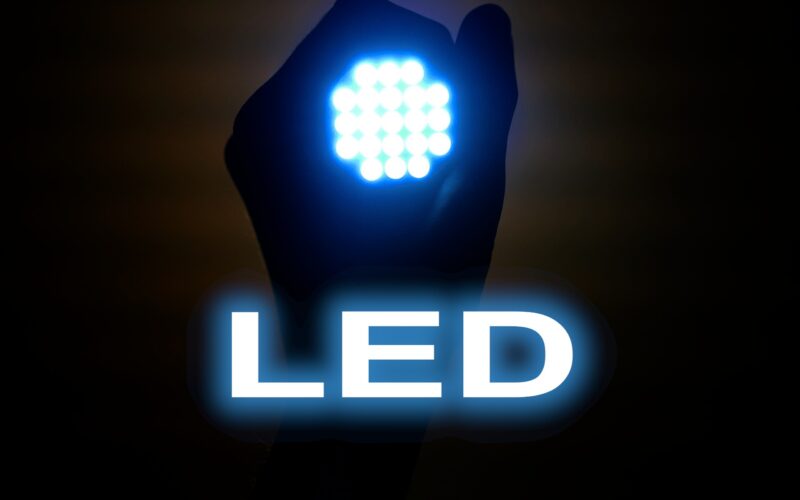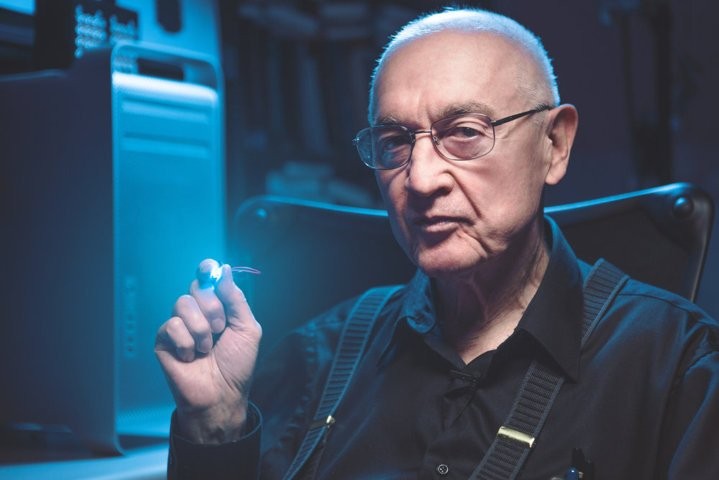What is LED?
Find out everything about LEDs, and find out how this technology is used today

LED is the English acronym for Light Emitting Diode, which in Portuguese means light emitting diode. It is a semiconductor electronic device that emits light when an electrical current passes through it. LED is a highly efficient light source as it converts almost all electrical energy into light, unlike incandescent lamps which emit a large amount of heat.
LEDs are used in a wide variety of applications, including residential and commercial lighting, electronics, signage, display screens, automotive, and many others. They are available in a variety of colors and sizes, and have a long lifespan and low power consumption, making them a popular choice for many applications.

Nick Holonyak Jr – Inventor of LEDs
When was the first LED created?
The first LED (light-emitting diode) was created in 1962 by Nick Holonyak Jr., an American electrical engineer who worked at General Electric. The LED created by Holonyak emitted red light and was constructed from a gallium arsenide semiconductor material doped with aluminum.
Although the first LED was created in 1962, its commercial application only became viable a few years later, when LEDs in other colors, such as yellow and green, were developed and manufacturing techniques were improved.
Today, LEDs are used in a wide variety of applications, from residential and commercial lighting to electronics, signage, display screens and more. Advances in LED technology have also led to the creation of high-power LEDs, which are capable of producing enough light to replace incandescent and fluorescent lamps.
 Where is the LED used?
Where is the LED used?
LEDs are used in a wide variety of applications due to their advantages over other light sources. Some of the main applications of LED include:
- Lighting: LEDs are widely used in residential, commercial and public lighting due to their high energy efficiency, long lifespan and ability to produce a wide range of colors.
- Electronics: LEDs are used in electronic devices such as remote controls, TV displays, cell phones, cameras and many others.
- Signage: LEDs are used in traffic signs, advertising signs, informational displays and many other types of signage.
- Display screens: LEDs are used in high-definition display screens, such as TVs, computer monitors, and big screens at sporting events and concerts.
- Automotive: LEDs are used in headlights, taillights, instrument panels and other vehicle lighting systems.
- Agriculture: LEDs are used in plant lighting systems in greenhouses to control plant growth and flowering.
We have mentioned just a few of the applications of LED, as its versatility and energy efficiency are leading to new applications in a wide variety of sectors.
Which components generate the colors of the LEDs?
The colors of LEDs (light-emitting diodes) are generated using special semiconductor materials that emit light when an electrical current is applied. The semiconductor materials used determine the color of the light emitted by the LED.
Color LEDs are produced using different semiconductor materials, the most common of which are:
- GaAsP (gallium phosphorus arsenide) – emits red and amber light.
- GaP (gallium phosphide) – emits green light.
- InGaN (indium gallium nitride) – emits blue, green, cyan and white light.
- AlInGaP (aluminum-indium-gallium phosphide) – emits red, orange and yellow light.
White LEDs are produced in two main ways: using a blue LED with a phosphor coating to convert some of the light to white light or combining light from three primary color LEDs (red, green and blue) in a single package to produce light white.
The different colors of LEDs are generated through the combination of different semiconductor materials and/or phosphor coatings, which emit light at specific wavelengths when an electrical current is applied.
RGB LEDs
RGB LEDs (red, green, and blue light-emitting diodes) are made up of three separate LEDs encapsulated in a single device. Each of these LEDs emits a primary color of light (red, green, and blue), and together these primary colors can be combined to produce a wide variety of colors. RGB LEDs are widely used in lighting, display and signage applications where a wide range of colors in a single device is desirable. There are two main ways to build an RGB LED:
- Mounting package with three LEDs: This type of LED consists of three separate LEDs encapsulated in a single housing. Each LED is wired individually and you can control the intensity of each color individually to create the color you want.
- Dot Matrix LED: This type of LED consists of an array of LED dots, where each dot is a combination of three separate LEDs. Each dot is controlled by a microcontroller that adjusts the intensity of each LED to produce the desired color.
Regardless of the type of RGB LED, you need to control the intensity of each primary color to produce the desired color. This is usually done using electronic circuits, such as LED controllers, that adjust the voltage and current applied to each LED to produce the desired color.
